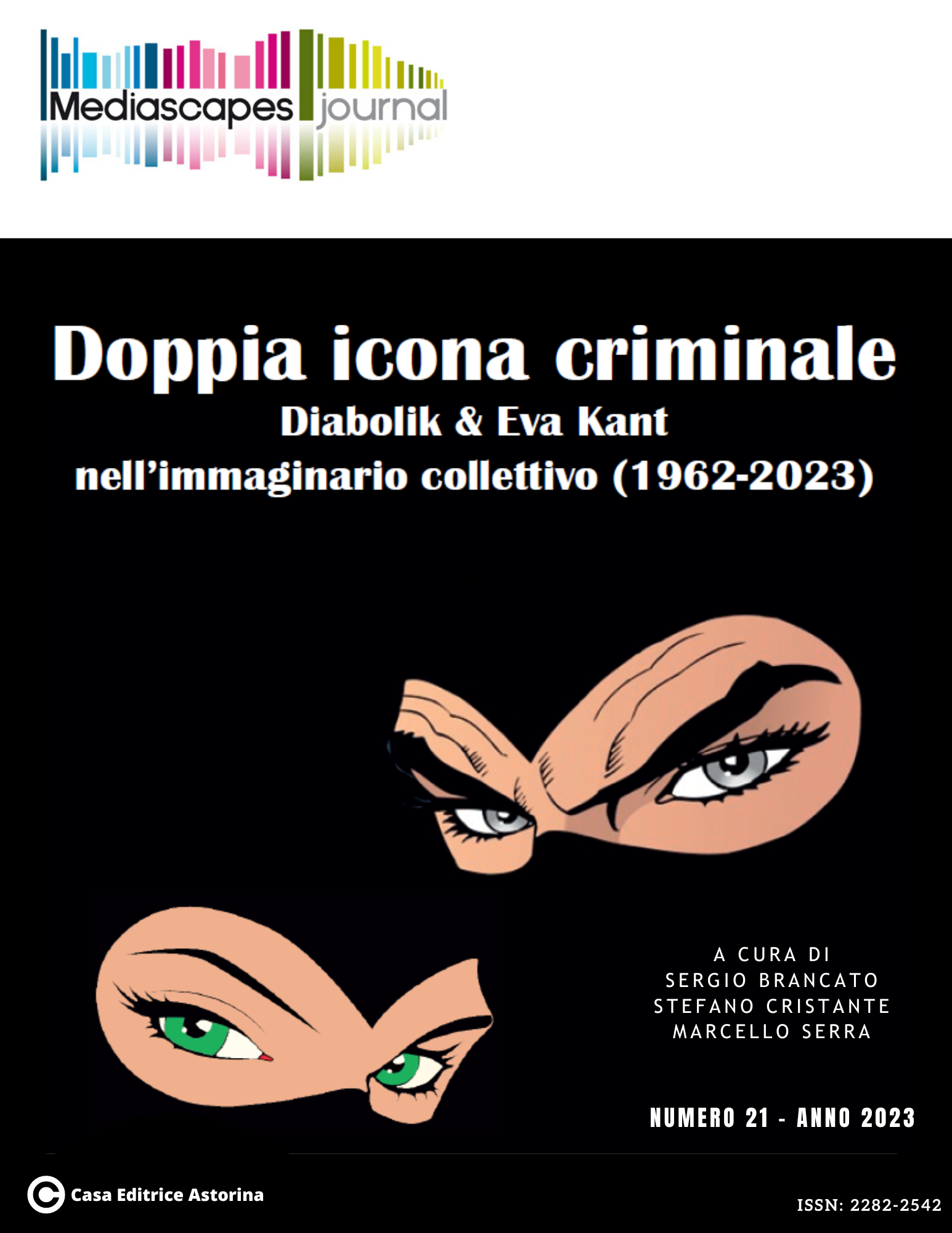Il Diabolik si nasconde nei dettagli
Tecnologia e “modernità amorale"
Parole chiave:
cultura popolare, razionalità strumentale, industria cultural, modernità amorale, tecnologiaAbstract
The creation of Diabolik (1962) was marked by signs of modernity in various respects: the seriality; the graphic format; the typology of industrial production; the target audience. A genealogy that reflects the Italian modern times strongly desired by Giussani sisters. To analyze the storytelling of the comic series, this article tries to thematize the analytical key of “amoral modernity”, elaborated starting from some historicized categories of the social sciences, primarily Max Weber’s instrumental rationality and the Enlightenment critique of the Frankfurt School.
A perspective that allows to look at the indissoluble “double criminal icon” in terms of ambiguity rather than pure negativity. The article intends to test this interpretative key by analyzing an “accessory” narrative element: the real and imaginary technology
##submission.downloads##
Pubblicato
Come citare
Fascicolo
Sezione
Licenza

TQuesto lavoro è fornito con la licenza Creative Commons Attribuzione 4.0 Internazionale.
Gli autori che pubblicano su questa rivista accettano le seguenti condizioni:
- Gli autori mantengono i diritti sulla loro opera e cedono alla rivista il diritto di prima pubblicazione dell'opera, contemporaneamente licenziata sotto una Licenza Creative Commons - Attribuzione che permette ad altri di condividere l'opera indicando la paternità intellettuale e la prima pubblicazione su questa rivista.
- Gli autori possono aderire ad altri accordi di licenza non esclusiva per la distribuzione della versione dell'opera pubblicata (es. depositarla in un archivio istituzionale o pubblicarla in una monografia), a patto di indicare che la prima pubblicazione è avvenuta su questa rivista.
- Gli autori possono diffondere la loro opera online (es. in repository istituzionali o nel loro sito web) prima e durante il processo di submission, poiché può portare a scambi produttivi e aumentare le citazioni dell'opera pubblicata (Vedi The Effect of Open Access).


